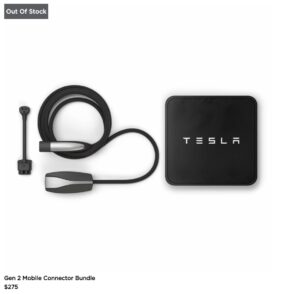Can a 2025 battery replace a 2032? The answer is yes, but let’s dig deeper into the details. When it comes to electronic devices and small gadgets, batteries are the lifeline that keeps them running. So, it’s important to know if a 2025 battery can effectively replace a 2032 battery, especially since they have different sizes and capacities. In this article, we will explore this question and provide you with a straightforward solution that can save you time and frustration when it comes to powering your devices. So, let’s get started!
Can A 2025 Battery Replace A 2032
Introduction
Batteries are an essential part of our daily lives, powering a wide range of devices from remote controls to watches. With various battery sizes available in the market, it’s important to understand their differences and compatibility. In this article, we will explore whether a 2025 battery can replace a 2032 battery. We’ll delve into the specifications, similarities, and differences between these two batteries to provide you with a comprehensive understanding.
The Basics: Battery Sizes
Before diving into the specifics, let’s start with a brief overview of battery sizes. Batteries are classified by their diameter, thickness, and chemistry. The numbers in the battery designations represent these dimensions; for example, a 2025 battery means it has a diameter of 20mm and a thickness of 2.5mm. Similarly, a 2032 battery has a diameter of 20mm and a thickness of 3.2mm.
Chemistry and Voltage
Both the 2025 and 2032 batteries are coin or button cell batteries commonly used in small electronic devices. However, they differ in terms of chemistry and voltage.
- The 2025 battery uses Lithium Manganese Dioxide (Li-MnO2) chemistry, which provides a voltage of 3 volts.
- The 2032 battery, on the other hand, utilizes Lithium-ion (Li-ion) chemistry, also delivering a voltage of 3 volts.
It’s important to note that while the voltages are the same, the chemical composition varies. This difference in chemistry can have implications for the overall performance and compatibility of the batteries.
Physical Differences
Although the 2025 and 2032 batteries share the same diameter of 20mm, there is a notable difference in their thickness. The 2025 battery has a thickness of 2.5mm, while the 2032 battery is slightly thicker at 3.2mm. This means that the 2032 battery occupies more space than the 2025 battery.
Apart from size, the labeling and markings on the batteries also differ. The numerical designation, such as “2025” or “2032,” is typically printed on the top surface of the battery for easy identification.
Compatibility and Intended Use
When it comes to compatibility, it’s essential to consider the intended use of the battery. While the 2025 and 2032 batteries have similar voltages, the physical size difference may impact their compatibility in certain devices.
- The 2025 battery, with its smaller thickness, is typically used in thin devices, like watches, fitness trackers, and calculators.
- The 2032 battery, being slightly thicker, is commonly used in devices that can accommodate its size, such as key fobs, computer motherboards, and medical devices.
It’s crucial to consult the device’s manual or specifications to determine the recommended battery size. Using the wrong size can lead to improper fitment, potential damage to the device, or even safety hazards.
Factors to Consider
While it may be tempting to interchange batteries based on their similar voltages, there are some important factors to consider before substituting a 2025 battery for a 2032, or vice versa.
1. Physical Fit
The most critical aspect to consider is the physical fit of the battery. Due to the difference in thickness, a 2025 battery may not fit securely in a device designed for a 2032 battery. It could result in poor contact, unreliable performance, or even damage to the device’s battery contacts.
2. Capacity and Runtime
Although both batteries provide the same voltage, they may differ in terms of capacity. The 2032 battery’s larger size allows for a higher capacity, meaning it can store more energy. Consequently, substituting a 2025 battery for a 2032 may result in reduced runtime for the device.
3. Shelf Life
Shelf life refers to the duration a battery can be stored without significantly losing its capacity. In general, 2032 batteries tend to have a longer shelf life compared to 2025 batteries. If a device requires infrequent battery changes, using a 2032 battery might be more suitable to ensure optimal performance even after extended storage periods.
4. Device Specifications
Always refer to the device’s manual or specifications to ensure compatibility. Manufacturers provide specific recommendations for battery sizes and types to guarantee reliable operation and longevity.
In conclusion, while a 2025 battery and a 2032 battery share the same voltage of 3 volts, they differ in terms of thickness, capacity, and intended use. Due to their physical differences, it is generally not recommended to interchange these batteries without considering the device’s specifications and requirements. Using the correct battery size ensures optimal performance, enhances safety, and prevents potential damage to the device. Always consult the device’s manual or specifications to determine the appropriate battery size for your specific application.
Frequently Asked Questions
Can a 2025 battery replace a 2032?
Yes, a 2025 battery can replace a 2032 battery in certain situations.
What is the difference between a 2025 and a 2032 battery?
The main difference between a 2025 and a 2032 battery is their size and capacity. The numbers indicate their dimensions, with the first two digits representing the diameter and the last two representing the thickness in millimeters. The 2025 battery is 20mm in diameter and 2.5mm thick, while the 2032 battery is 20mm in diameter and 3.2mm thick. The 2032 battery has a larger capacity due to its increased thickness.
Can I use a 2025 battery instead of a 2032 battery in all devices?
No, you cannot use a 2025 battery instead of a 2032 battery in all devices. While they are both coin cell batteries, their differences in thickness can affect compatibility. Some devices may have specific requirements for the thickness of the battery compartment, and using a thicker battery may result in improper fit or damage to the device.
In which devices can I use a 2025 battery as a replacement for a 2032?
A 2025 battery can be used as a replacement for a 2032 battery in devices that accommodate both sizes and do not have strict thickness requirements. Common examples include calculators, watches, key fobs, remote controls, and small electronic devices. It’s always recommended to check the device manual or consult the manufacturer to ensure compatibility.
What are the advantages of using a 2032 battery over a 2025?
The main advantage of using a 2032 battery over a 2025 battery is its larger capacity. The extra thickness allows for a higher energy storage, resulting in longer battery life. This can be particularly important for devices that require a constant power supply, such as medical devices or certain electronics.
Can using a 2025 battery instead of a 2032 battery damage my device?
Using a 2025 battery instead of a 2032 battery may not necessarily damage your device, but it can lead to improper fit and potential loss of battery contact. This can result in unreliable performance or the device not functioning at all. It’s always recommended to use the battery size specified by the manufacturer to ensure optimum performance and avoid any potential issues.
Final Thoughts
In conclusion, while a 2025 battery may physically fit into a device that requires a 2032 battery, it may not provide the same level of performance or longevity. The main difference between these two batteries is their capacity, with the 2032 battery offering a higher capacity. This means that the 2025 battery may not last as long or provide the same amount of power as the 2032 battery. Therefore, it is recommended to use the correct battery type specified by the device manufacturer to ensure optimal performance. So, Can A 2025 Battery Replace A 2032? It is possible, but not without potential limitations in terms of performance and lifespan.



